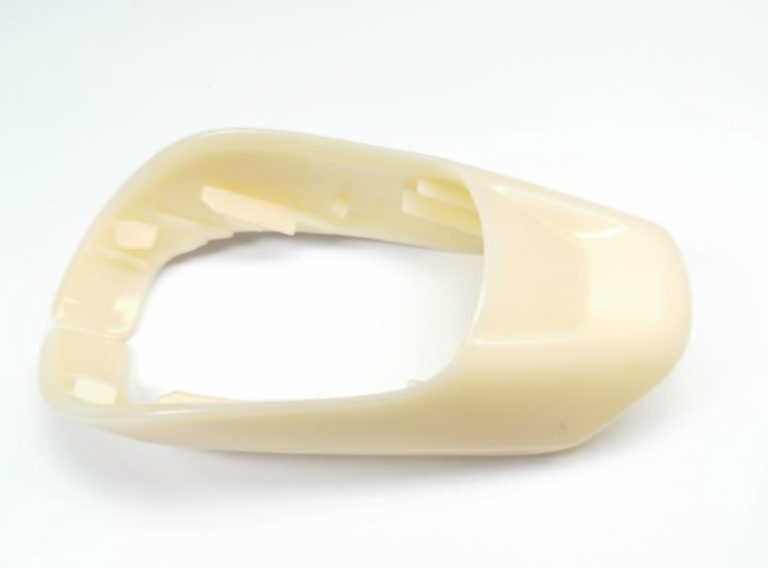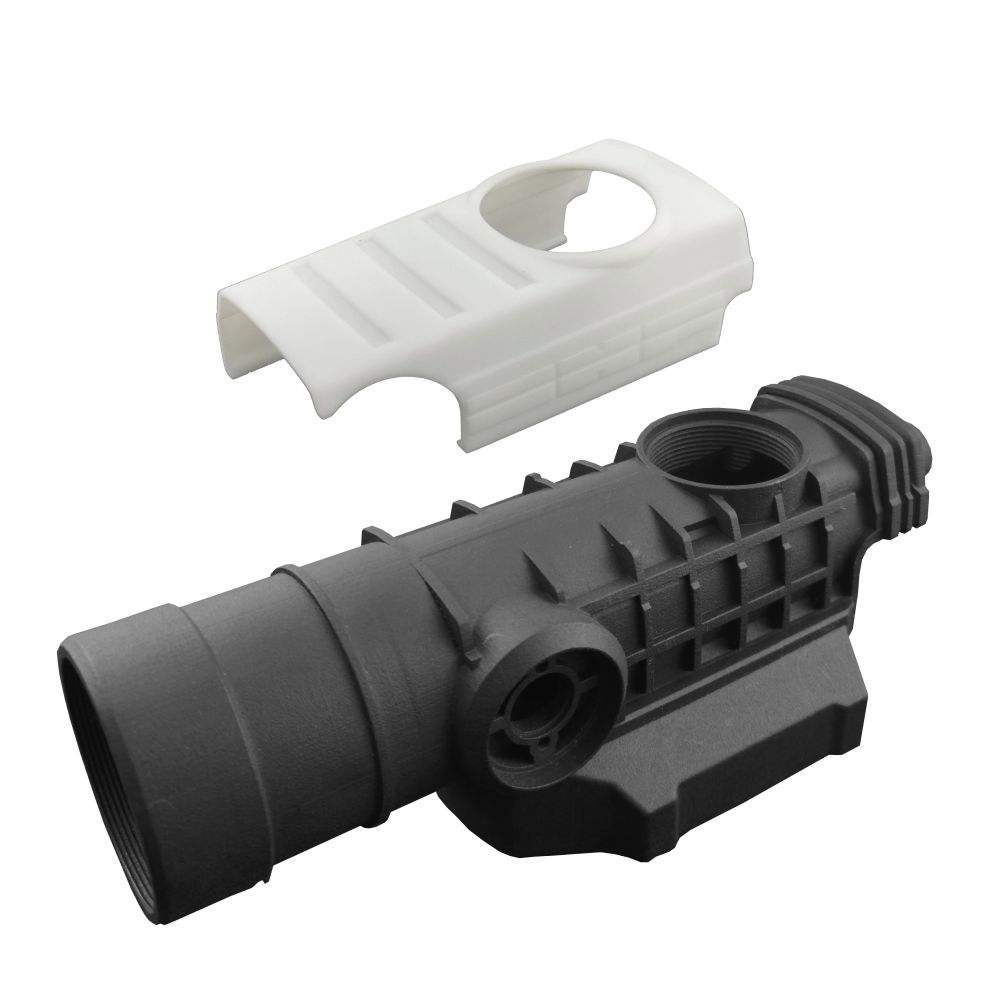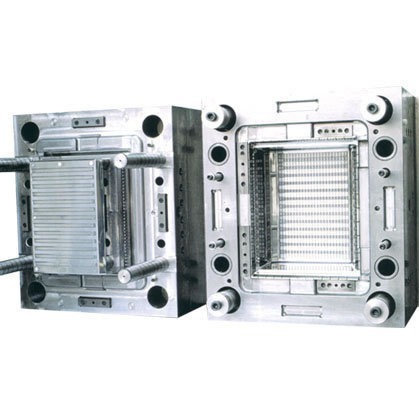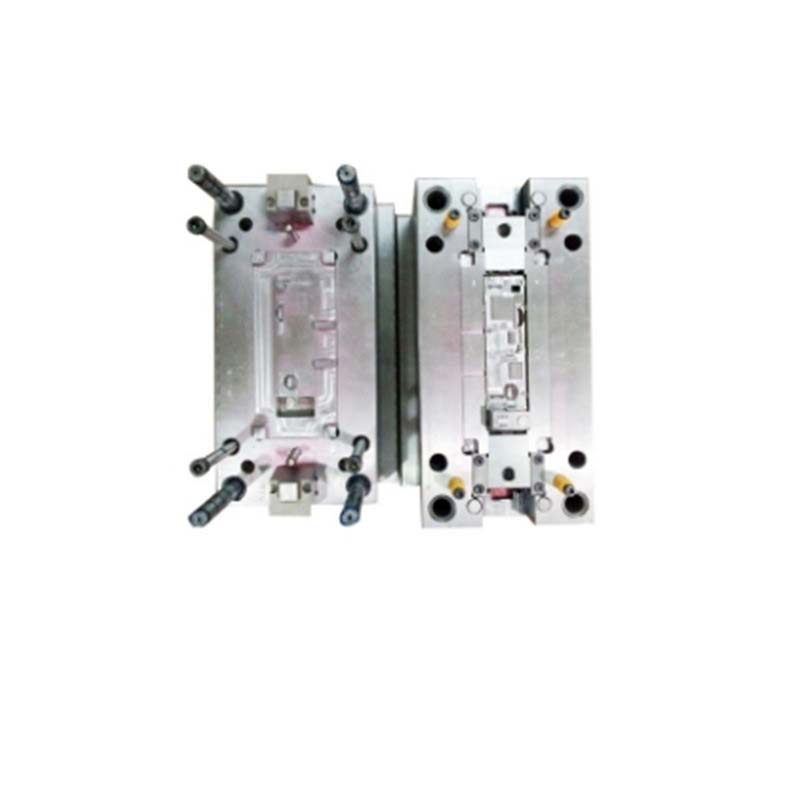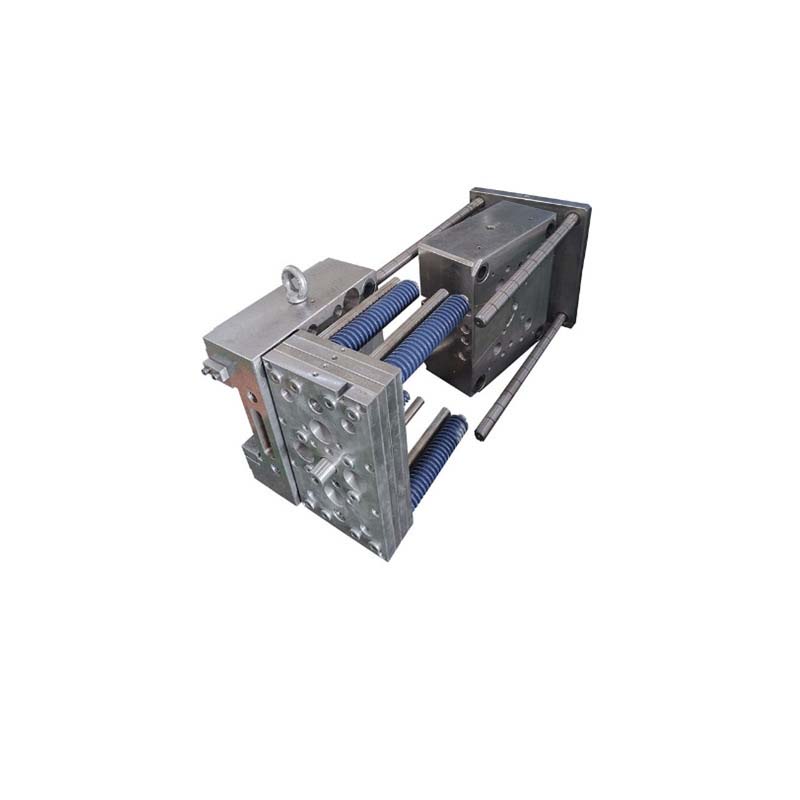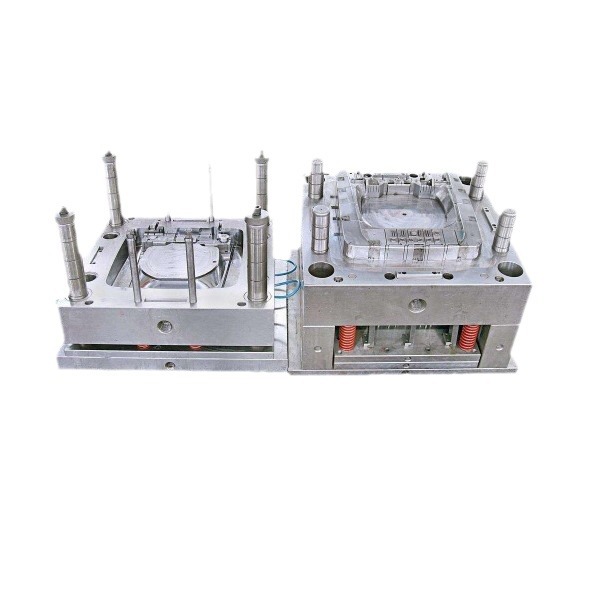Introduction
Definition of Plastic Mold and Injection Mold
A plastic mold is a general term for a tool used to shape plastic materials into various products. It serves as a crucial component in the plastic manufacturing industry, enabling the production of a wide range of plastic items we encounter in our daily lives, from small household appliances to large automotive parts. Plastic molds can be designed and fabricated using different manufacturing processes and materials, depending on the specific requirements of the product.
An injection mold, on the other hand, is a specific type of plastic mold. It is designed for the injection molding process, which is one of the most common and efficient methods for producing plastic parts. In the injection molding process, molten plastic is injected into a closed mold cavity under high pressure. Once the plastic cools and solidifies, it takes on the shape of the mold cavity, and the finished part is then ejected from the mold. Injection molds are often highly complex, with multiple components that work together to ensure precise and efficient production.
Importance of Understanding the Differences
Understanding the differences between plastic molds and injection molds is of utmost importance in several aspects. In industrial production, choosing the right type of mold can significantly impact production efficiency. For example, if a manufacturer needs to produce a large quantity of identical plastic parts with high precision, an injection mold would be a more suitable choice due to its ability to mass - produce parts quickly. On the contrary, for small - scale production or products with unique shapes that do not require high - volume output, a more general plastic mold might be more cost - effective.
In product design and development, knowing the capabilities and limitations of each type of mold helps designers create more feasible and optimized product designs. For instance, injection molds can achieve very detailed and complex geometries, which allows designers to incorporate intricate features into their products. However, the design of an injection mold also has some constraints, such as the need for proper draft angles to ensure easy ejection of the molded part. By being aware of these factors, designers can make better decisions during the design phase, saving time and resources in the long run.
1. Material and Composition
Comparison in Material Performance
| Property | Plastic Mold Materials (e.g., P20 steel, aluminum alloy) | Injection Mold Materials (e.g., H13 steel, NAK80) |
| Strength | P20 steel has medium - high strength, while aluminum alloy has relatively lower strength compared to steel but still sufficient for many plastic - molding applications | H13 and NAK80 steels have high strength, especially H13 which can endure high - pressure injection forces |
| Durability | S136 steel in plastic molds has good durability due to its corrosion - resistance. Aluminum alloy has a shorter lifespan in high - stress applications but can be durable for products with lower production volumes | Injection mold steels like H13 and NAK80 are highly durable, suitable for high - volume production runs with long - term use |
| Cost | Aluminum alloy is relatively cost - effective in terms of material price and machining cost for simple molds. P20 steel is also moderately priced | High - performance injection mold steels such as H13 and NAK80 are more expensive due to their special alloying elements and strict quality requirements |
| Heat Resistance | Aluminum alloy has limited heat - resistance, and P20 steel has moderate heat - resistance. They may need additional cooling or heating systems for some high - temperature plastics | H13 and NAK80 steels have excellent heat - resistance, capable of withstanding the high temperatures during injection molding without significant deformation |
| Wear Resistance | P20 steel has basic wear - resistance, and aluminum alloy has relatively lower wear - resistance. They may experience more wear in high - volume production | H13 and NAK80 steels have high wear - resistance, ensuring long - term stable performance in injection molding |
2. Manufacturing Process
Plastic Mold Manufacturing Steps
The manufacturing process of a plastic mold is a multi - step procedure.
- Design Phase: First, the mold design is created based on the product requirements. This involves using computer - aided design (CAD) software to create a 3D model of the mold. Designers need to consider factors such as the shape of the plastic product, draft angles (usually around 0.5 - 2 degrees depending on the plastic material and the complexity of the part) to ensure easy ejection of the molded part, and the location of any inserts or cores. For example, if the plastic product has internal holes, the position and shape of the cores that will form these holes need to be carefully designed.
- Material Selection and Procurement: After the design is finalized, the appropriate mold material is selected as mentioned before. Once the material is chosen, it is procured. For example, if P20 steel is selected for a plastic mold, the steel blocks of the required size are ordered from a reliable steel supplier.
- Machining: Machining is a crucial step. CNC (Computer Numerical Control) machining is often used to shape the mold components. Milling machines are used to remove excess material from the steel or aluminum alloy blocks, creating the basic shape of the mold cavity and cores. Drilling operations are carried out to create holes for screws, cooling channels, and other features. The machining accuracy for plastic molds is typically within ±0.05 - ±0.1 mm for general - purpose molds, but it can be higher for molds with more precise requirements.
- Heat Treatment (if applicable): Some plastic mold materials, like certain types of steel, may require heat treatment. Heat treatment can improve the material's hardness, strength, and wear - resistance. For example, P20 steel may be heat - treated to increase its hardness to the appropriate level for plastic molding. The heat - treatment process usually includes heating the steel to a specific temperature (such as around 850 - 900°C for P20 steel), holding it at that temperature for a certain period, and then cooling it at a controlled rate.
- Surface Finishing: Surface finishing is important to ensure good surface quality of the molded plastic parts. Grinding and polishing operations are performed. Grinding is used to remove any rough surfaces left after machining, and polishing can achieve a smooth surface finish. For plastic molds used for products with average surface requirements, a surface roughness of Ra 0.8 - Ra 1.6 μm can be achieved. For high - end products, the surface roughness can be as low as Ra 0.1 - Ra 0.4 μm.
- Assembly: The individual components of the plastic mold, such as the cavity, cores, and inserts, are assembled together. Precise alignment is crucial during assembly. Bolts and dowel pins are used to secure the components in place. For example, dowel pins with a diameter tolerance of ±0.01 mm are often used to ensure accurate alignment between the cavity and the core plates.
Injection Mold Manufacturing Process
The manufacturing process of an injection mold is more complex due to the high - pressure injection process it has to withstand.
- Mold Design: Similar to plastic molds, injection mold design starts with creating a 3D model using CAD software. However, for injection molds, additional factors need to be considered. The flow path of the molten plastic, known as the runner system, needs to be carefully designed. The size and shape of the runners (such as circular or trapezoidal runners) are determined based on the volume of plastic to be injected and the layout of the cavities. For a multi - cavity injection mold, the runner system should be designed to ensure that the molten plastic reaches each cavity at the same time and with the same pressure.
- CNC Machining: High - precision CNC machining is used to create the basic structure of the injection mold. The mold plates, cavity, and core are machined with extremely high accuracy. The machining accuracy for injection molds is often within ±0.01 - ±0.03 mm. Complex geometries, such as undercuts or side holes in the mold, may require additional machining operations like 5 - axis CNC machining to achieve the required shape.
- Electrical Discharge Machining (EDM): EDM is often used in injection mold manufacturing, especially for creating intricate details or for materials that are difficult to machine by traditional methods. In EDM, a shaped electrode is used to erode the mold material in a controlled manner by creating electrical discharges. For example, if the injection mold has very fine details or sharp corners, EDM can be used to accurately create these features without causing damage to the surrounding material.
- Heat Treatment: Heat treatment is a critical step for injection molds. The mold materials, such as H13 steel, are heat - treated to enhance their heat - resistance, toughness, and wear - resistance. The heat - treatment process for H13 steel typically involves quenching and tempering. Quenching involves heating the steel to a high temperature (around 1020 - 1050°C) and then rapidly cooling it in oil or air. Tempering is then carried out at a lower temperature (around 550 - 650°C) to relieve internal stresses and improve the steel's mechanical properties.
- Surface Treatment: In addition to surface finishing, injection molds may require surface treatment. Electroplating, such as chrome plating, can be applied to the mold surface to improve its corrosion - resistance and release properties. The thickness of the chrome plating is usually around 0.02 - 0.05 mm. Nitriding is another surface treatment method that can increase the hardness and wear - resistance of the mold surface.
- Assembly and Testing: The injection mold components are assembled with great precision. After assembly, the mold is thoroughly tested on an injection molding machine. The mold is tested for proper closing and opening, the functionality of the ejection system, and the flow of the molten plastic through the runner and gate system. Any issues, such as leaks or improper ejection, are identified and corrected before the mold is put into production.
Process - Specific Considerations
In terms of precision, injection molds generally require higher precision compared to plastic molds. The high - pressure injection of molten plastic in injection molding means that even a slight deviation in the mold's dimensions can lead to defects in the molded parts, such as flash (excess plastic around the part edges) or uneven wall thickness. For example, if the tolerance of the cavity - core alignment in an injection mold is off by more than ±0.01 mm, it can cause significant problems in the molded part quality.
Regarding surface quality, injection molds also have more stringent requirements, especially for products with high - end surface aesthetics. A smooth mold surface can prevent surface defects like sink marks or flow lines on the molded plastic parts. In contrast, plastic molds for less - demanding applications may have relatively lower surface - quality requirements.
The complexity of the manufacturing process also varies. Injection mold manufacturing involves more complex processes like EDM and advanced surface treatments, which are not always necessary for all plastic molds. The design and manufacturing of the runner and gate systems in injection molds add another layer of complexity, as they need to be optimized for efficient plastic flow and part quality.
5. Yigu Technology's Perspective
As a non - standard plastic metal products custom Supplier, Yigu Technology deeply understands the significance of differentiating between plastic molds and injection molds. The difference in material properties, manufacturing processes, and application scenarios directly impacts the customization process.
For example, when a customer requests a small - batch production of a plastic part with unique geometric features, Yigu Technology may choose a more general plastic mold made of aluminum alloy, considering its cost - effectiveness and relatively simple manufacturing process. On the contrary, for high - volume production of high - precision plastic parts, such as components for electronic devices, an injection mold made of high - quality alloy steel like H13 would be the preferred choice.
Understanding these differences allows Yigu Technology to provide more professional advice to customers, optimize the production process, and ensure the high - quality delivery of custom - made products. It also helps in better cost - control and meeting the diverse needs of the market.
